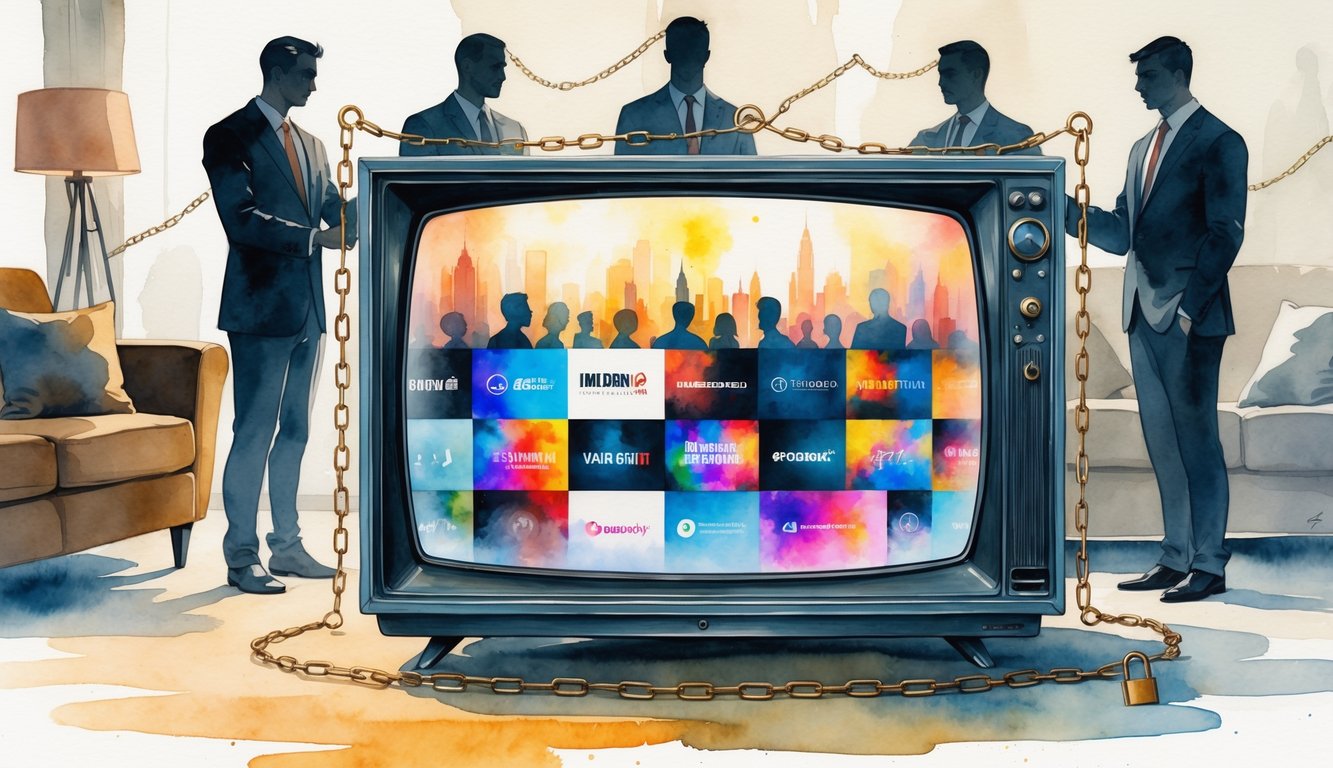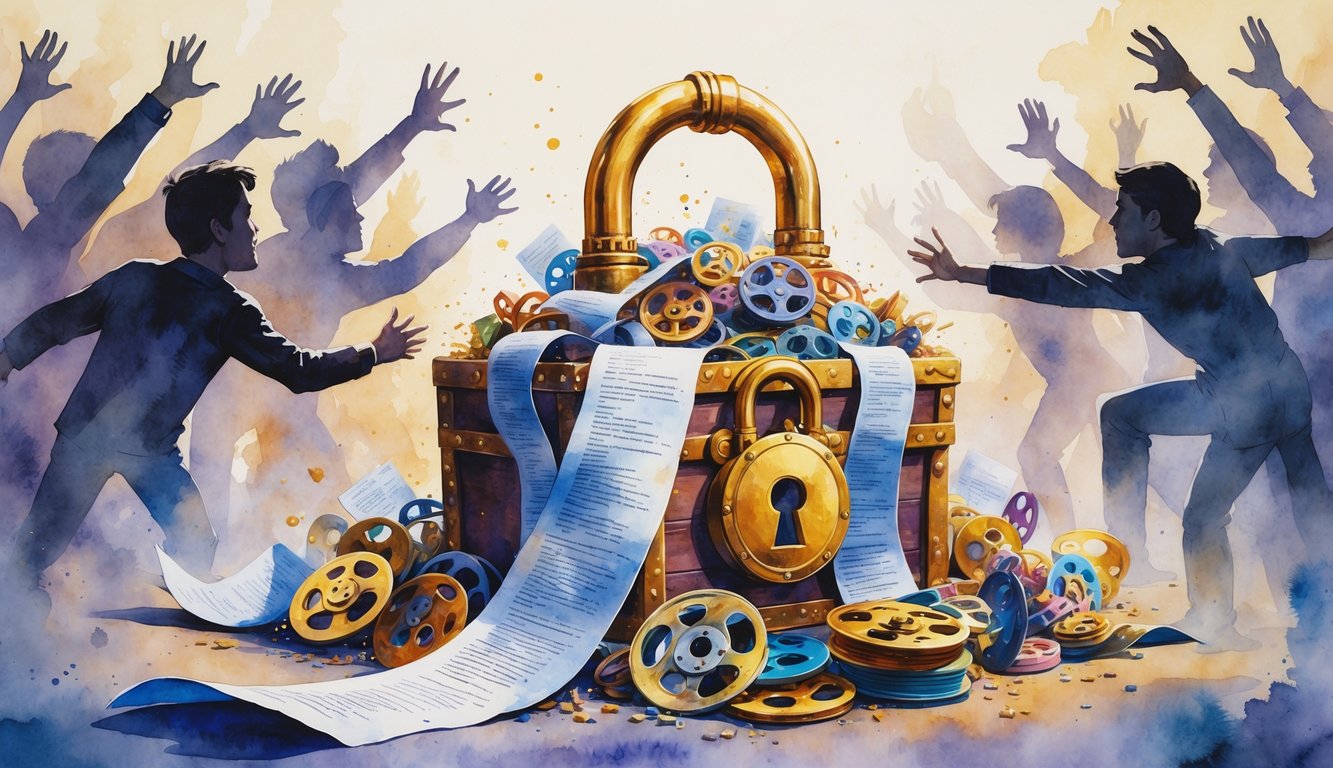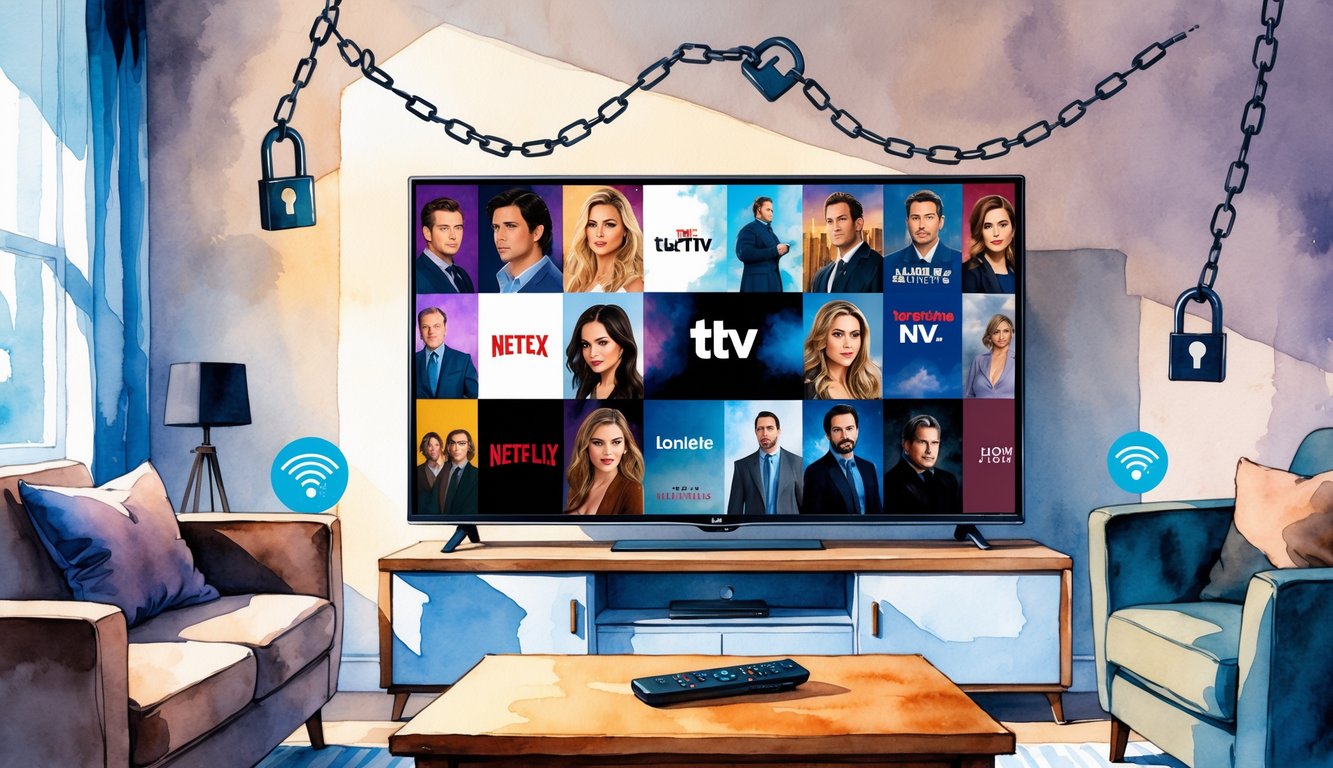
Scrolling through streaming apps last night—again, can’t find that crime doc everyone’s obsessed with—I just hit this wall. Streaming contracts, loaded with exclusivity stuff, quietly fence off the most-wanted shows and hand all the leverage to a few platforms. It’s not just annoying for anyone juggling three subscriptions and still seeing “not available in your region”—seriously, what am I paying for, exactly? But hey, the Federation of American Scientists did a deep-dive and, apparently, these vertically stacked streaming giants are basically gatekeeping hit shows. Not just setting the price (which, wow, didn’t realize I was paying for “sorta” access), but deciding if you can even find the show at all.
“Content rights distribution,” “exclusivity periods”—experts keep dropping these terms like we’re all entertainment lawyers. Most people don’t realize what they’re missing until someone in another city goes, “Wait, you haven’t watched that yet?” Meanwhile, I’m lost in a maze of paywalls and FOMO, just trying to see what won an Emmy. At least old TV had a guide; now it’s just legal spaghetti, and honestly, I doubt even the contract writers remember what’s licensed where. How are we supposed to keep up? I mean, really.
How Streaming Contracts Influence Content Availability

Trying to remember which platform has what? Forget it. I’d need a spreadsheet just to keep track—unless you’re the type who enjoys bouncing between Netflix, Disney+, and whatever random flavor-of-the-month streamer. It’s not just “does this platform have it”—contracts and weird licensing quirks keep shuffling everything, so the lineup is always a moving target.
Understanding Exclusive Licensing Agreements
Every time I get excited for a show, thinking it’ll be somewhere obvious, news drops that “exclusive licensing” yanks it away to one app. Netflix snags some buzzy thriller and, poof, it’s gone from Hulu for years (or forever). FilmTake’s global SVOD breakdowns? They talk about pay-1, second window, library tiers—layers so ridiculous you’d need a decoder ring to follow.
Platforms literally pay extra to snatch up originals and big-budget series first, shutting out the competition. Studios get their upfront cash, but regular viewers? We get less access. Want one show? Sign up, cancel, sign up again—like chasing a finish line that keeps moving. Producers cash bigger checks, but fewer people even see their stuff. Fox lost a whole fandom overnight once when a new exclusivity period started. I watched it happen. Complete disaster.
Regional Restrictions and Geo-Blocking
Try using a VPN or traveling abroad, and suddenly your favorite show disappears, swapped for something with weird subtitles or just a sad “not available” message. Region-locked licensing is way more intense than people think. Studios and platforms argue over every country, so Netflix in Austria is a whole different beast than Netflix in the US.
Did you know 30% of the top 100 global series aren’t even legally streamable outside their home countries? Not just about “demand”—rights management and local ad contracts bake in these restrictions. I once tried to finish a boxing docuseries in Tokyo—nope, my US account meant nothing. Had to wait until I got home. Localization quirks make even original content weirdly hard to find, even if you’re a die-hard fan.
Hidden Clauses That Affect Top-Rated Shows
And the contracts? Buried exclusivity clauses and silent embargoes everywhere. Sometimes a whole season gets finished and teased in trailers, but nobody can watch it for months because a platform stuck in some “holdback window” clause. Some deals even ban sharing clips or press blurbs until the platform’s window ends.
FilmTake’s recent reports list a dozen A-list movies held from secondary platforms for up to sixteen months. That’s not hype—it’s the fine print. I’ve called distributors and always get the same vague answer: “Please check back next quarter.” Even exec producers get left out, all thanks to these tangled release rules. “Original content” sometimes just means “exclusively unavailable” when you actually want to watch.
The Impact on Popular TV Series and Movies

Contract details nobody notices keep tripping me up—suddenly, the show everyone’s raving about just…vanishes, or never even drops in my country. And why does one platform get all the buzzy originals while the others are left with ancient leftovers or weird missing seasons? Top movies, limited runs, and licensing gobbledygook yank things away right when I want to rewatch.
Top-Rated Originals and Restricted Access
Nothing’s worse than hearing about a killer show—like “Stranger Things” or a shiny Marvel original—then realizing your region is locked out. These contracts, the ones nobody reads (and studios quietly hammer out with streaming giants), stash the most-wanted TV behind exclusive paywalls.
Big titles don’t just “release everywhere”—Netflix keeps “Stranger Things” locked up like crown jewels, but in South Africa, it’ll lag or just disappear. Licensing splits create these weird blackouts, so an “original” series could totally live on a rival network somewhere else. CATONSVILLE, MD (2021) research points out, this artificial limitation just drives piracy, because viewers get boxed out by geography and legal tape.
And insiders I’ve talked to say platforms throw piles of money at exclusivity to lure new subscribers, but loyalty tanks as soon as a title leaves or is missing half its seasons.
Rotating Catalogs and Expiring Titles
Forget catching up on trends—I’m too busy hunting for last month’s top movie. Stuff doesn’t stay on one platform. Timed licensing means Disney+, Amazon Prime, Paramount+, whoever, can quietly shuffle or drop even “must-see” hits.
Seriously, I once planned a movie night and my pick expired the night before, thanks to invisible rights contracts. Subscribers don’t get warnings; there’s no calendar—just click, and it’s gone. Forbes said in 2023 that the average platform rotates 10%–15% of its catalog every three months, which just wrecks my queue.
Even messier, content jumps between competitors: Same title, new home, different release date. Sometimes a “new drop” is just a recycled movie from someone else’s leftovers, maybe renamed, maybe censored differently in a new region (anime, “Friends,” or the infamous “Harry Potter” shuffle—don’t get me started).
Case Studies: Stranger Things, Game of Thrones, Squid Game
“Game of Thrones,” massive as it was, never hit Netflix—not even as a guest spot. HBO Max locked it behind two-tiered paywalls—ad-free premium vs. standard—with geo-blocks making it worse if you logged in while traveling. Friends of mine literally pay for VPNs just for new episodes, which advertisers apparently love since Nielsen says 20% of Gen Z use VPNs mainly for streaming.
Then there’s “Stranger Things,” my go-to binge until one Christmas, half my family abroad couldn’t find it. Turns out, Netflix’s “Original” isn’t global; in Poland, season 4 got delayed three months because of some old cable deal. “Squid Game” went viral, but licensing quirks split subtitles and dubs, so Europe got bad translations and Twitter lost its mind.
There’s no cheat code—shows bounce, vanish, trickle in piecemeal, all thanks to contract clauses fans will never see. Want answers? Me too, but last time I asked Netflix support, their chatbot just apologized and sent me to the new arrivals list. Thanks for nothing.



